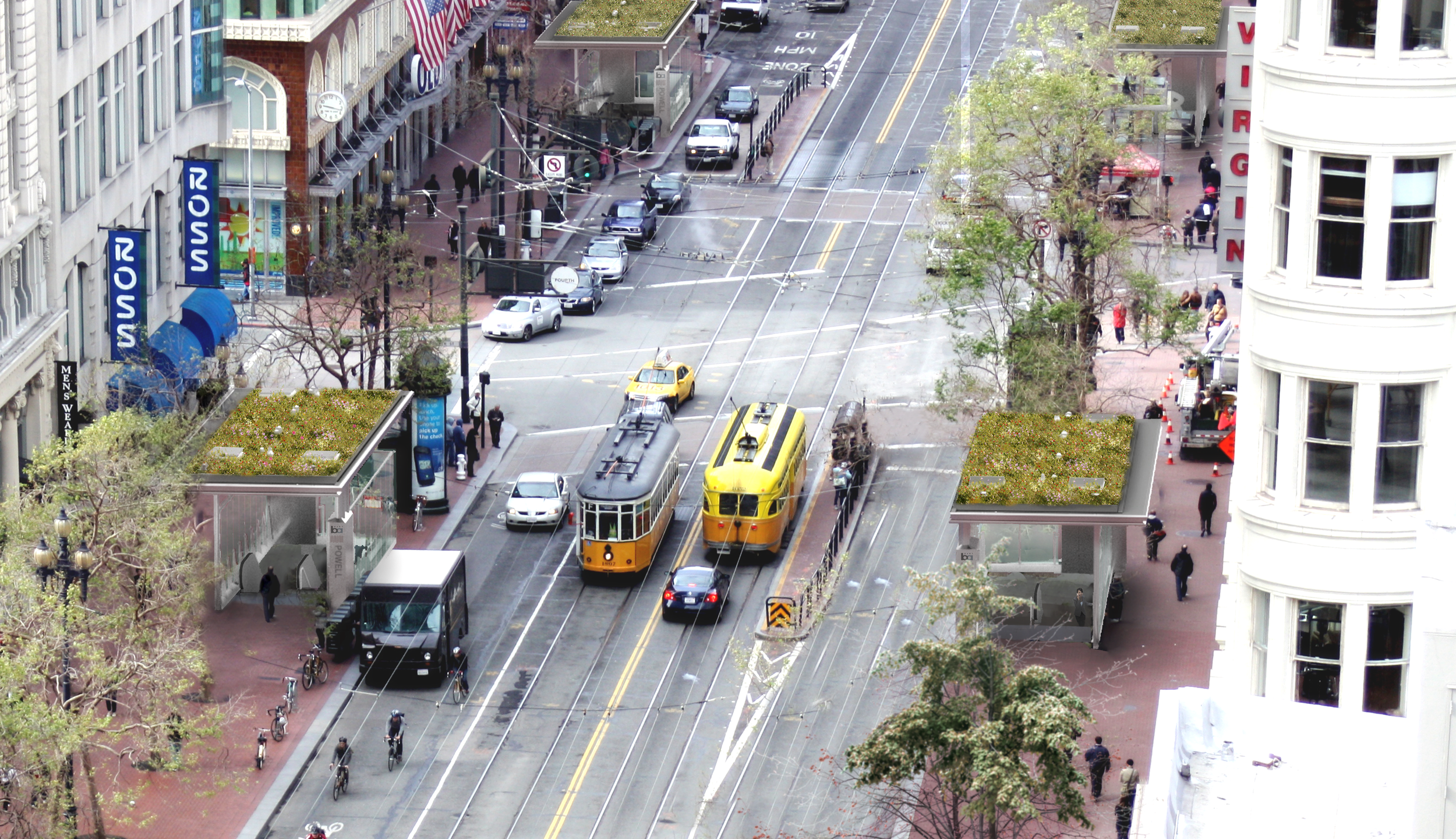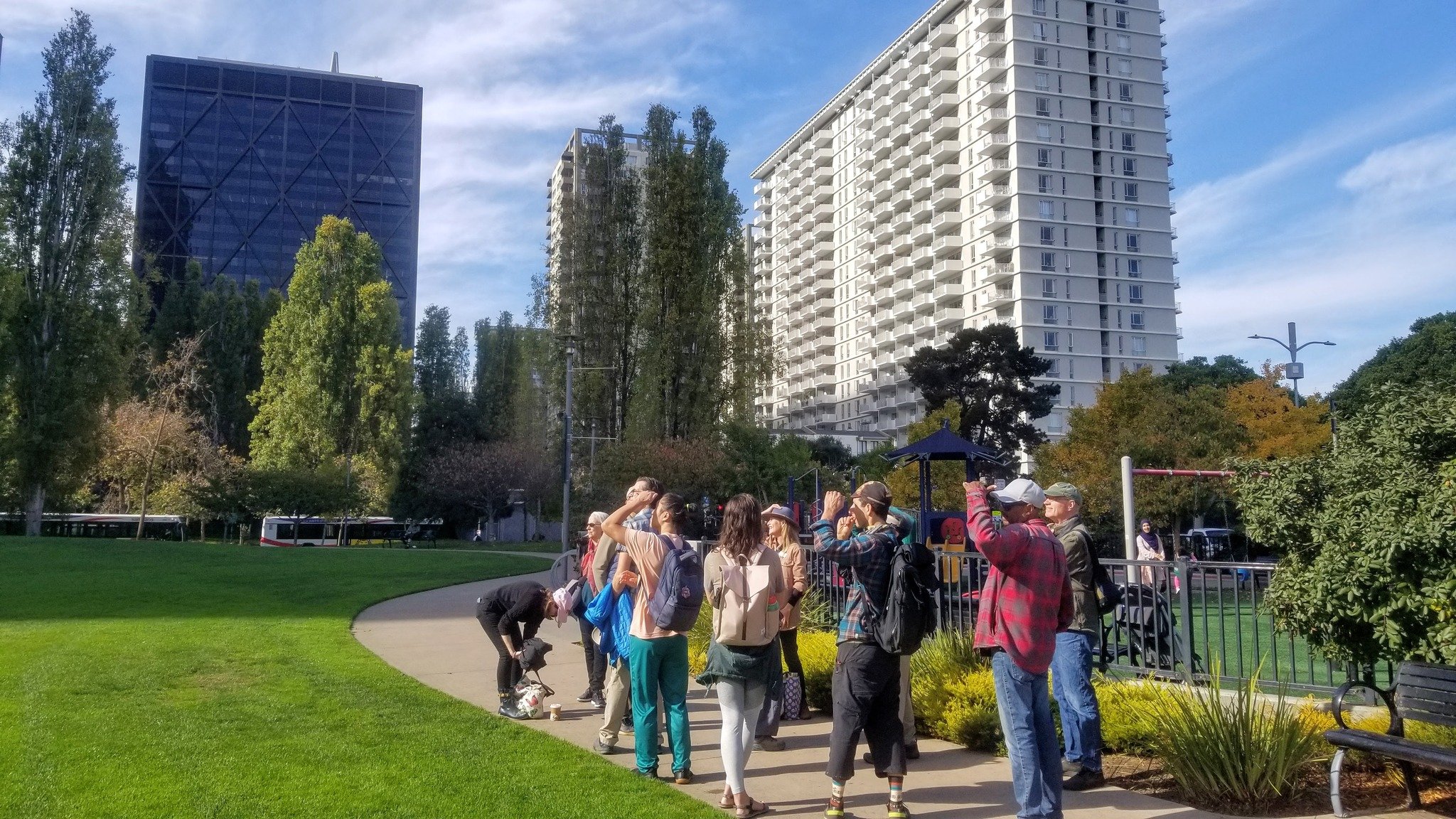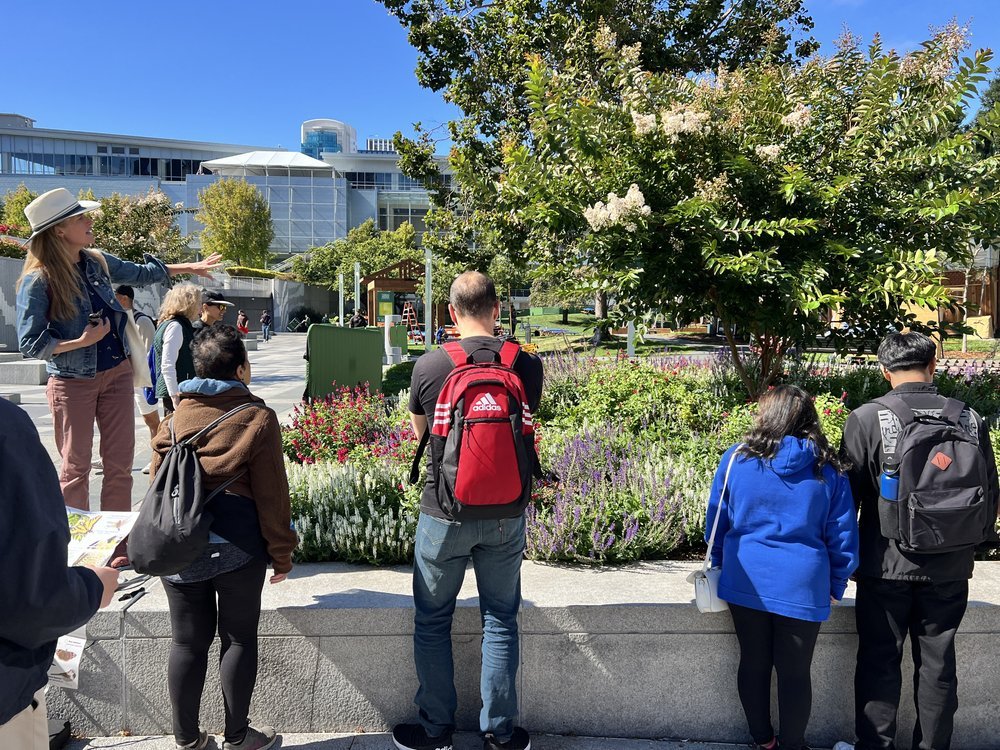
Tigers on Market Street
Tigers on Market Street
Amidst the bustle of San Francisco’s urban center, Western Tiger Swallowtail butterflies have been living a bit precariously since the 1980s when Market Street was first planted with London plane trees. These butterflies lay eggs on London plane trees (and a host of other trees) and live a complete life cycle in the parks, plazas, and urban tree canopy at the center of San Francisco.
From the butterfly’s perspective, Market Street’s tall buildings, tree-lined traffic flow, sun-filled plazas, and nearby parks resembles its natural habitat: a river canyon with trees and meadows filled with nectar flowers. There is a problem. Flowers that feed butterflies with nectar and water are scarce. The Tigers on Market Street seeks to enhance habitat with a particular focus on adding the flowering plants the butterflies need.
Nature in the City, in partnership with Bay Area Rapid Transit (BART) and San Francisco Municipal Transportation Agency (MUNI), are partnering to add living roofs to the newly constructed public transit stations on Market Street. The BART/MUNI Canopy Living Roofs project will support the Western Tiger Swallowtail and other native wildlife in the heart of the city.

We invite you to experience downtown San Francisco from the butterfly’s perspective: a river canyon lined with trees and dotted with sunny meadows and planted with flowers.
In 2013, we started this project to help people experience a unique butterfly phenomenon happening downtown. Our tools are public artwork, observations, advocacy, field work, and public nature walks. We aim to connect people to local wildlife in San Francisco — one of the most densely populated cities in the US.
The Tigers on Market Street project is located along Market Street between Civic Center and the Embarcadero in San Francisco. It also includes Salesforce Transit Park, Yerba Buena Park, Sue Bierman Park, Embarcadero Plaza and the many rooftop and balcony gardens, plazas, and living walls surrounding Market Street.
When nature thrives, you thrive!
Nature is an essential part of human life. We are biologically hardwired to connect with nature. The Tigers on Market Street project seeks to reestablish this human-nature connection — for the health of the butterfly and other native fauna and flora, as well as for human health.
This project is part of San Francisco's Better Market Street Project, and we are advocating for biodiversity and wildlife habitat, as an advisor, advocate, and partner in the process.
We are raising funds to bring nature to downtown San Francisco’s public spaces, including the BART/MUNI Canopy Living Roofs. Donations to this project gives you and your workplace a sense of rootedness and an opportunity to revitalize downtown with a focus on urban greening and nature.
The Tigers on Market Street & BART/MUNI Canopy Living Roofs projects will come about because of long-established partnerships.
We work closely with local and regional agencies, community benefit districts, nonprofits, and companies to make sure this project remains vital for years to come. Those who we list are among many who work alongside us, endorse the project, and and actively seek to include nature downtown.
The City and County of San Francisco, including San Francisco Municipal Transit Agency, San Francisco Environment Department, and San Francisco Public Works
Regional living roof and sustainability experts, including RANA Cohabitat Co. and BioStudio
Regional nonprofit partners, including SPUR and the Association of Ramaytush Ohlone
Community benefit districts, including Union Square Alliance, Yerba Buena Community Benefit District








